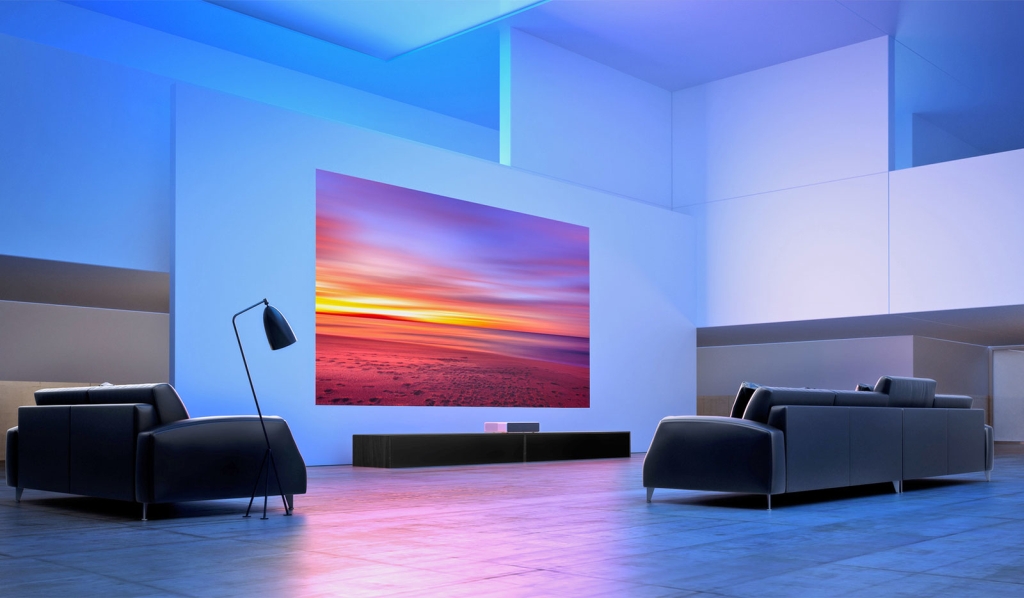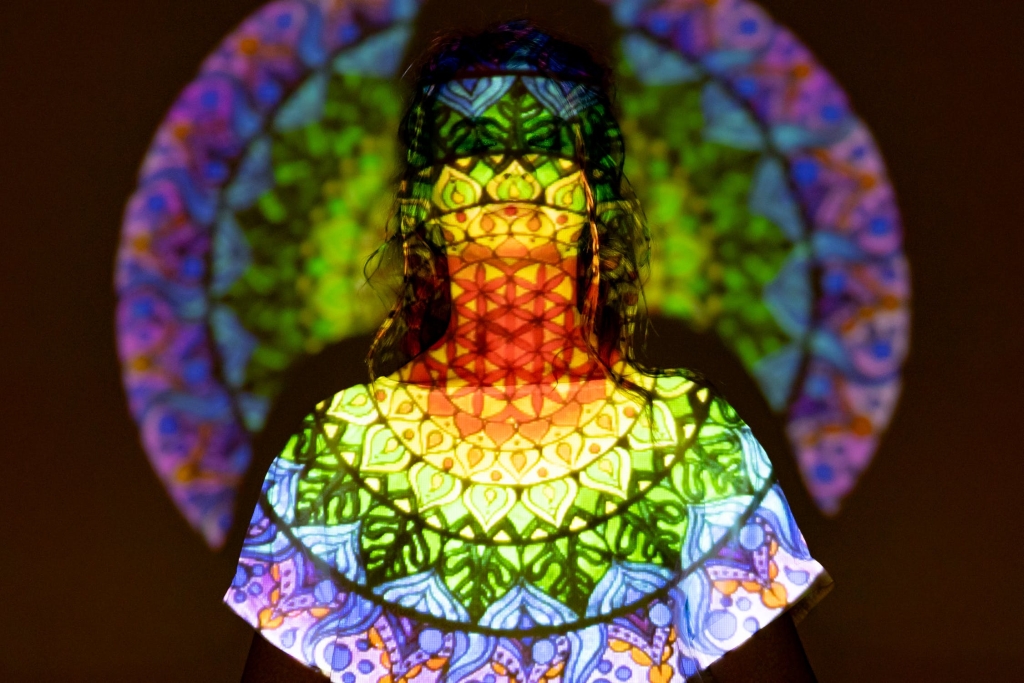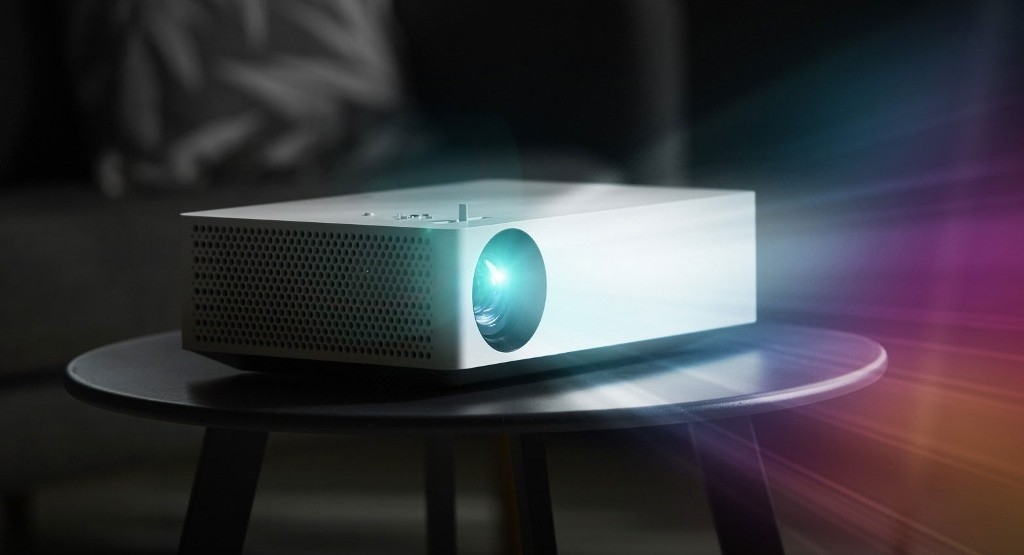Up until recently, most technology fans were content with their 1080p HDTVs, but that all changed with the release of the 4K format. While 4K TVs have been available for a while, the technology has only recently hit the mainstream, making 4K projectors a hot item. The True 4K screen, with its four times the resolution of Full HD, is the new benchmark for home entertainment systems, and it’s the resolution of choice for the best 4K TVs. But if you have a Full HD TV, a new technology called 4K upscaling can give you higher-quality images than you’d see from a standard Full HD 4K TV. The price of 4K projectors is dropping fast, and there are many models on the market. Here we look at some of the cheapest models currently available.
This article contains affiliate links for which we may receive commissions at no additional cost to you if you make a purchase through our links. As an associate member of Amazon, we can earn money on eligible purchases. Read more. Thinking about buying a 4K projector and not sure where to start? Although 4K projectors are more expensive than standard HD and Full HD projectors, they offer significantly better value in terms of image resolution, graphic detail, brightness and contrast. Therefore, they are perfect for transforming your living room into a mini auditorium or entertainment room and you can enjoy the best entertainment at a short distance. If you can’t decide between a 4K TV and a 4K projector, we can say that a projector has a clear advantage over a TV.

A 4K projector can easily project an image of over 100 inches, which you could probably do with a TV, but at an exorbitant price. Add to that the cost of decorating and furnishing to give the TV a finished look, and you have a few more grandchildren. On the other hand, if you decide to turn a freshly painted wall into a projector screen and turn the room into a mini cinema, all you need are translucent curtains in front of the windows (for a view of the daylight) and a decent sound system. In case you forgot, this is the best part. You can adjust the screen size to suit your needs. Today we’re taking a look at a few projectors that support True 4K technology. We take a look at some affordable but highly rated 4K projectors that can take your home entertainment and gaming experience to the next level.
Available 4K technology
Technology is constantly evolving and we see devices as young as six months old being called the latest generation. When 4K technology was first introduced and found its way into a wide range of displays, the cost was high. At the time, 4K was considered a technology that only the upper class could afford. However, the situation has now changed considerably. New players and competitive markets are also making the latest technologies available, and 4K projectors are no exception. Many True 4K projectors are really cheap and available to the proletariat.
True 4K projectors
So, where to start? First of all, you should know that there are two types of 4K projectors. There are True 4K projectors whose image chips contain discrete 3840 x 2160 pixels that can produce True 4K images. There are also higher resolution projectors, 720p or 1080p, but the chips move each pixel diagonally to double the resolution in post-processing. This quality enhancement technology is called 4K enhancement technology.
Choosing a 4K projector – our buying guide

When choosing a 4K projector, there are certain factors that should be considered in detail to get the projector that will meet your needs. Each projector differs in its specifications and functions. Some have a longer life, but the brightness may not meet your expectations. Some have enough light to work during the day, but are not compatible with Android. Some have the Android operating system installed, but the connectivity is not sufficient. The same applies to inconsistencies in contrast or graphic quality. Here are the intricate details you should consider.
Resolution and graphic details
We’ve already talked about True 4K and 4K enhancement technology. It becomes the most important factor in choosing the projector you want to take home. To understand it better, let’s take the example of some smartphones that use pixel binning to capture 64MP images. The sensor is not a true 64MP sensor, and thanks to the pixel aggregation mechanism, the 16MP photo is up-sampled to 64MP in post-processing. So the image is more detailed than the 16MP, but it still doesn’t have the impeccable quality of a true 64MP camera. The sharpness of the image with a projector is a bit less than with a real TV, because some details are lost during projection. To compensate for this loss, always recommends choosing projectors with True 4Kresolution, which have more pixels in their image chips and convey the finest details of any content you project onto the screen.
Brightness and contrast

The brightness of the projector determines how clearly you can see the projection. Because content must travel from the projector to the screen before you can look at it, ambient light can intrude and disrupt the viewing experience. Projector brightness, typically measured in lumens, competes with ambient light to display bright, clear content on the screen. The projector must be positioned correctly so that ambient light does not interfere with projection. You also need to choose the brightness according to how you want to use the projector. If used during the day, the brightness should be above average. If it is to be used in the dark, the ambient light does not matter. The contrast ratio is an important factor to consider because it controls the brightness between black and white. Normally, a high contrast ratio results in more brightness in the dark and white segments of an image. You can also place multiple shades of the same color. Therefore, the color reproduction of a projector with a high contrast ratio is more accurate.
Lamp life, descaling and disposal
Of all the parts of a projector, the lamp is probably the most important element that has a big impact on the cost of the projector. If it is damaged or has reached the end of its life, you will have to spend several hundred dollars to replace it. A good projector is one whose lamp life is long enough to pay for itself. It doesn’t make sense to spend four figures for a projector that will only last six months with moderate use. The scale and projection coefficients follow. As the name implies, zoom factor is the ability of the projector to zoom in or out and fill the projection area. If it’s a wall, you can make it slightly larger so it fills the entire wall for borderless entertainment. The shooting report is a bit more technical. In short, the rejection factor determines the distance between the projection surface and the projector. Short-throw and ultra-short-throw projectors allow you to place the projector closer to the screen and reduce noise. What kind of intervention? Think about people who stay up late or go to the movies and end up casting their shadow on the screen.
Pricing, user interface and connectivity

The price of a 4K projector depends mainly on the technology used to produce 4K content. True 4K projectors have a price tag of around four figures, while 4Ke projectors are available for less than $500. The user interface becomes crucial when you buy it to replace a 4K TV. The user interface of the TV is much more sophisticated and detailed than that of the projector. With a significant number of users opting for 4K projectors lately, some manufacturers are using the Android operating system to refine their user interface and make it more user-friendly, almost like smart TVs. Therefore, it is important to thoroughly research all aspects of a 4K projector on different portals before deciding on a purchase. Finally, the projector is only useful if it is perfectly connected to the source from which you want to project an image. Therefore, the appropriate upstream ports must be available to transmit the content to be projected. The connections must be compatible with the various devices in your home. Some projectors offer the ability to connect to a Wi-Fi network through which content can be projected.
Supplement
Projectors with true 4K support can improve the quality of the content you consume. It is a good replacement for a 4K TV if purchased wisely and after sufficient research. You get much more than a big screen TV for less money. You will be speechless and begging for more, because the projection is larger than 100 inches. A good projection can add hours to your work productivity and allow you to relax when you are tired. With costs dropping rapidly with the advent of the latest technology, now is the perfect time to consider purchasing a conventional 4K or Laser True projector and turning your basement into your very own 4K cinema.Projectors are still very much a novelty in the tech industry, but that doesn’t mean that they are necessarily a bad budget investment. In fact, some of the best 4K and 3D projectors on the market are available at low prices, and you won’t find them in big box stores or online retailers. Buying a projector is a big decision, and you don’t want to spend a lot of money on something that you won’t even use very often. So, the best way to know if you’re buying the right projector is to do a little research and by the end, you’ll have a pretty good idea of which projector to buy.

